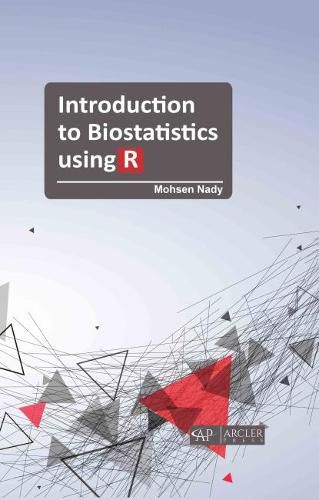Readings Newsletter
Become a Readings Member to make your shopping experience even easier.
Sign in or sign up for free!
You’re not far away from qualifying for FREE standard shipping within Australia
You’ve qualified for FREE standard shipping within Australia
The cart is loading…






This book covers some introductory steps in biostatistics using R programming language. Biostatistics is the branch of statistics that applies statistical methods to medical and biological problems. Biostatistics has become more important recently for studying the great amount of data that is produced from census data, genome sequencing, gene expression data, medical bioinformatics, and medical imaging data. With the help of R programming, statistical analysis, data cleaning, data visualization, and machine learning has become a relatively easy tasks for these huge datasets. R is now considered the centerpiece language for doing all these data science skills because it has many useful packages that not only can perform all these tasks, but also, has additional packages that were specifically designed for several statistical tasks related to biology and medical data. In addition, many scientific journals require the data analysis R scripts to ensure reproducibility of the submitted results. The first chapter of this book introduces many statistical concepts used in scientific research like study designs, sample, and population, and data types. Chapters 2, 4, and 5 cover the three main data types which are continuous data, categorical data, and time to event data. Chapter 3 discusses the popular continuous distribution that is the normal distribution along with its application to sample data. Chapter 6 is about the sampling distribution of different sample estimates along with a discussion of the famous central limit theorem (CLT). Chapters 7 and 8 are involved in confidence interval (CI) calculations, and Chapters 9-11 discuss several types of statistical tests like t-test, ANOVA, Chi-square, log-rank, etc. Finally, Chapters 12-14 deal with different regression types; linear regression for continuous outcomes, logistic regression for binary outcomes, and Cox regression for time to event outcomes. In all these chapters, many examples from many scientific journal articles or built in data sets along with different codes and outputs are given to help your understanding of these numerous statistical concepts. I hope this book will be a great addition to your future biostatistical projects.
$9.00 standard shipping within Australia
FREE standard shipping within Australia for orders over $100.00
Express & International shipping calculated at checkout
This book covers some introductory steps in biostatistics using R programming language. Biostatistics is the branch of statistics that applies statistical methods to medical and biological problems. Biostatistics has become more important recently for studying the great amount of data that is produced from census data, genome sequencing, gene expression data, medical bioinformatics, and medical imaging data. With the help of R programming, statistical analysis, data cleaning, data visualization, and machine learning has become a relatively easy tasks for these huge datasets. R is now considered the centerpiece language for doing all these data science skills because it has many useful packages that not only can perform all these tasks, but also, has additional packages that were specifically designed for several statistical tasks related to biology and medical data. In addition, many scientific journals require the data analysis R scripts to ensure reproducibility of the submitted results. The first chapter of this book introduces many statistical concepts used in scientific research like study designs, sample, and population, and data types. Chapters 2, 4, and 5 cover the three main data types which are continuous data, categorical data, and time to event data. Chapter 3 discusses the popular continuous distribution that is the normal distribution along with its application to sample data. Chapter 6 is about the sampling distribution of different sample estimates along with a discussion of the famous central limit theorem (CLT). Chapters 7 and 8 are involved in confidence interval (CI) calculations, and Chapters 9-11 discuss several types of statistical tests like t-test, ANOVA, Chi-square, log-rank, etc. Finally, Chapters 12-14 deal with different regression types; linear regression for continuous outcomes, logistic regression for binary outcomes, and Cox regression for time to event outcomes. In all these chapters, many examples from many scientific journal articles or built in data sets along with different codes and outputs are given to help your understanding of these numerous statistical concepts. I hope this book will be a great addition to your future biostatistical projects.